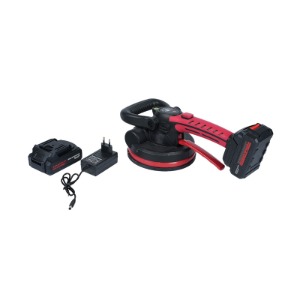
In the construction industry, efficient and safe installation of floor tiles is a critical step that requires precision and care. One of the tools commonly used for this purpose is the tile vibrating paver—a machine designed to compact tiles into position by applying controlled vibration. As this equipment comes into direct contact with fragile materials such as ceramic or porcelain, vibration control and tile protection are essential.
Balancing Power and Control
The primary function of a tile vibrating paver is to ensure even placement and secure adhesion of tiles by eliminating air gaps beneath them. However, excessive or uncontrolled vibration can result in cracks, chips, or tile displacement. To prevent this, tile vibrating paver manufacturers develop machines with adjustable vibration settings. These allow operators to fine-tune the intensity of the vibration according to the type and thickness of the tile being installed.
By offering variable speed or frequency controls, manufacturers give users the ability to work with a wide range of materials while minimizing the risk of damage. This flexibility is crucial for projects involving high-end or delicate tiles that require extra care during installation.
Use of Soft, Non-Marking Contact Surfaces
To protect tile surfaces during operation, a tile vibrating paver manufacturer often incorporates soft, non-abrasive contact materials into the machine's base. Rubber or polyurethane pads are commonly used to absorb excess force and prevent scratching or marking.
These materials provide a buffer between the hard machine surface and the tile, distributing pressure more evenly and reducing impact. Some manufacturers also design interchangeable pads that can be swapped depending on the tile material, ensuring better compatibility and protection.
Ergonomic Design for Controlled Operation
Another method of vibration control is through ergonomic design. A well-balanced tile vibrating paver allows for smoother handling, reducing the chance of uneven pressure or uncontrolled movement. Handles with vibration-dampening features or padded grips enhance operator comfort and precision.
By focusing on stability and operator control, tile vibrating paver manufacturers reduce the likelihood of mishandling, which can lead to tile misalignment or breakage. This is especially important in large-scale installations where consistent application is necessary to maintain surface uniformity.
Integration of Safety Features
Tile protection is not only about physical components but also about preventing operator errors. Many tile vibrating paver manufacturers integrate safety features such as automatic shut-off systems or vibration timers. These features help avoid prolonged exposure to vibration, which can wear down both the tile and the machine.
Some machines are equipped with sensors that detect surface inconsistencies and adjust performance accordingly. These smart systems support both productivity and precision, offering a more controlled and protective operation.
Ongoing Product Testing and Material Compatibility
Before entering the market, tile vibrating pavers undergo rigorous testing. A reputable tile vibrating paver manufacturer evaluates machine performance across various tile materials and adhesives to ensure compatibility. Testing helps fine-tune vibration levels and contact surface design to prevent tile damage during actual use.
This process also involves feedback from professional installers, allowing manufacturers to adapt their machines to meet real-world requirements.
Vibration control and tile protection are at the core of every design consideration for a tile vibrating paver manufacturer. Through adjustable vibration settings, non-damaging contact materials, ergonomic controls, and built-in safety features, these manufacturers ensure their equipment supports efficient tile installation without compromising tile integrity. As construction demands evolve, the ability to address these factors effectively helps maintain the quality and longevity of tiled surfaces in both residential and commercial projects.


 English
English русский
русский Español
Español italiano
italiano